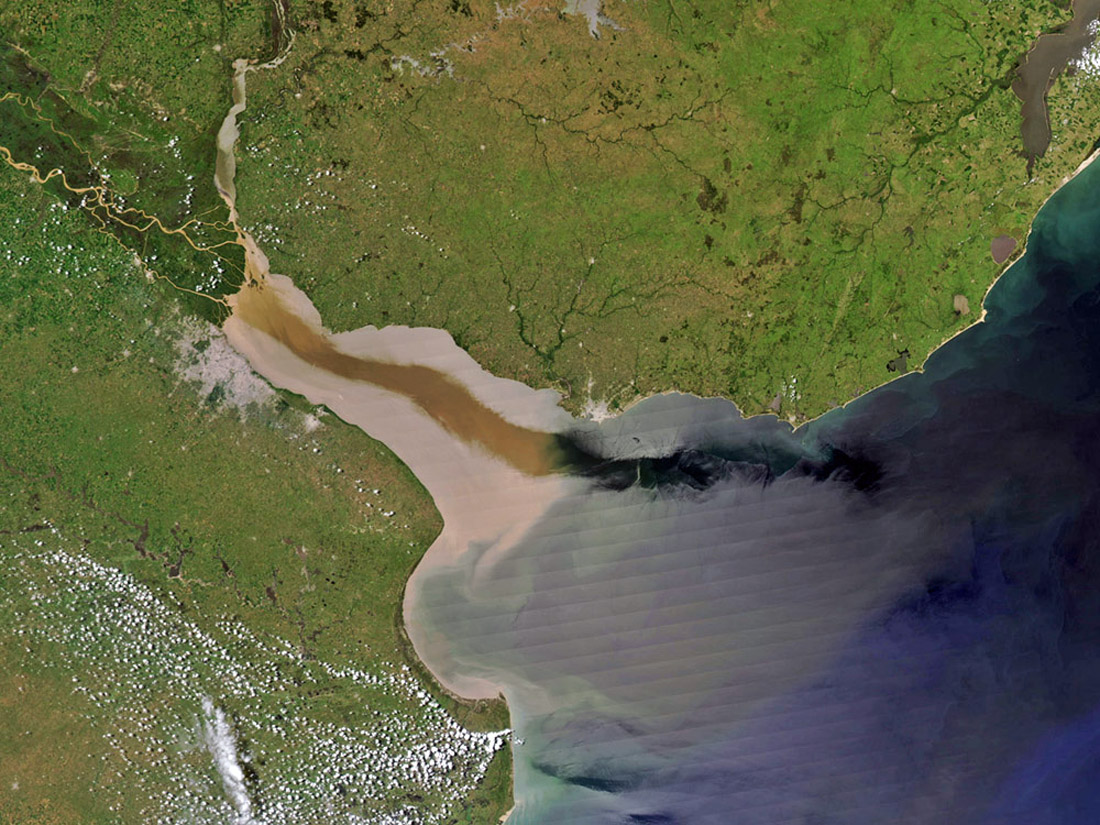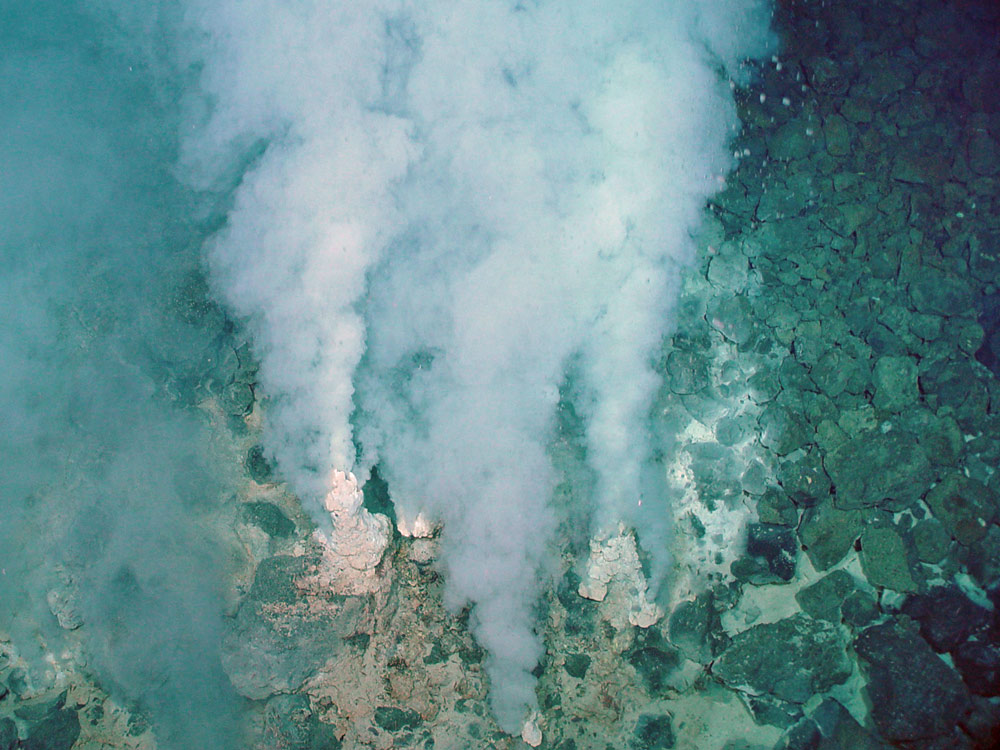From Cosmos by Jake Port
The water on the Earth’s surface was once fresh.
How that changed ?
It is estimated there is enough salt in the world’s oceans to cover all the planet’s land surfaces with a layer about 40 stories thick.
But seawater wasn’t always so salty; when the Earth’s oceans first formed about 3.8 billion years ago, as the surface of the planet cooled enough to allow water vapour to liquify, the oceans were mostly fresh water.
So where did all the salt come from?
Satellite view of La Plata River discharge to the Atlantic Ocean.
One way minerals and salts are deposited into the oceans is from outflow from rivers, which drain the landscape, thus causing the oceans to be salty.
It came from rock, laden with elemental salts including sodium, chlorine and potassium, that was spewed forth as magmatic material by massive volcanos from the depths of the planet.
Enter erosion, the process liberating these salts from their rocky prison, thanks to an atmosphere dominated by gases including nitrogen and, importantly, carbon dioxide.
This carbonic acid rained down on salt-rich rock, slowly breaking through and releasing the trapped salt into rainwater.
The runoff slowly carried the salt to nearby lakes and rivers, which in turn carried it to the seas.
Although the amount deposited by any one outlet was small, the contribution of millions of outlets over millions of years gradually raised the salinity of the oceans. The process continues.
Along the way from rock to sea, a fair proportion of the salt released from rock is used by living things.
Salt is crucial to both plant and animal life, regulating the amount of fluid in cells and neuron function.
When an organism dies and decomposes, the salt is freed to continue its seaward journey.
The Mariana Arc is part of the Ring of Fire that lies to the north of Guam in the western Pacific.
In 2004, scientists exploring the NW Eifuku volcano near the Mariana Islands reported seeing small white chimneys emitting a cloudy white fluid near the volcano's summit, as well as masses of bubbles rising from the sediment around the chimneys.
In this picture you can see masses of minerals and carbon dioxide escaping from the earth's crust into the ocean.
These vents contribute dissolved minerals to the oceans, which is one reason the oceans are salty.
Acid rain isn’t the only way the seas are fed with salt.
Ongoing volcanism still has an important role to play.
Hydrothermal vents allow seawater that has seeped though the rock of the oceanic crust to return to the surface.
The water is superheated from magma below, and as it travels up it dissolves minerals locked in the crust, erupting as mineral-rich steam.
A similar process involves the interaction of submarine volcanoes with surrounding seawater. Submarine volcanoes are comparable to their above-ground relatives except that their lava cools much more rapidly, allowing for speedy growth.
Magma erupting through submarine fissures boils the surrounding water, which then dissolves salts in the cooling rock to escape in a manner similar to hydrothermal vents.
Many of the worlds islands were formed by this process, releasing thousands of tons of salt in the process.
While seawater contains, on average, about 35 grams of salt per litre, the oceans and seas are not uniformly salty; generally the closer you get to the poles the less saline the water becomes, as fresh water released from the ice of the frozen poles dilutes the concentration of the salt.
When you are swimming in the ocean or sea, the last thing you want is a big mouth full of water.
Its horrible because it is really salty.
But why is it salty?
This video looks into why the sea is salty and how it gets there
There is still one question left: if most of the salt in the sea comes via rivers and streams, why are they not also salty?
The simple explanation is that they do contain salt, but the concentration is much lower, and the salt flows rather than accumulates.
It is estimated that each year four billion tons of dissolved salts are carried to the sea by rivers.
So is the ocean getting saltier?
The answer right now is probably not.
The input of salts is balanced by salts being buried underground by the movement of tectonic plates, the flow of freshwater and a host of other processes.
Links :
- BBC : Why is the sea so salty
- USGS : Why is the Ocean salty ?
- NOAA : Why is the ocean salty?
- YouTube : Our World: Why are Oceans Salty? (NASA)


No comments:
Post a Comment